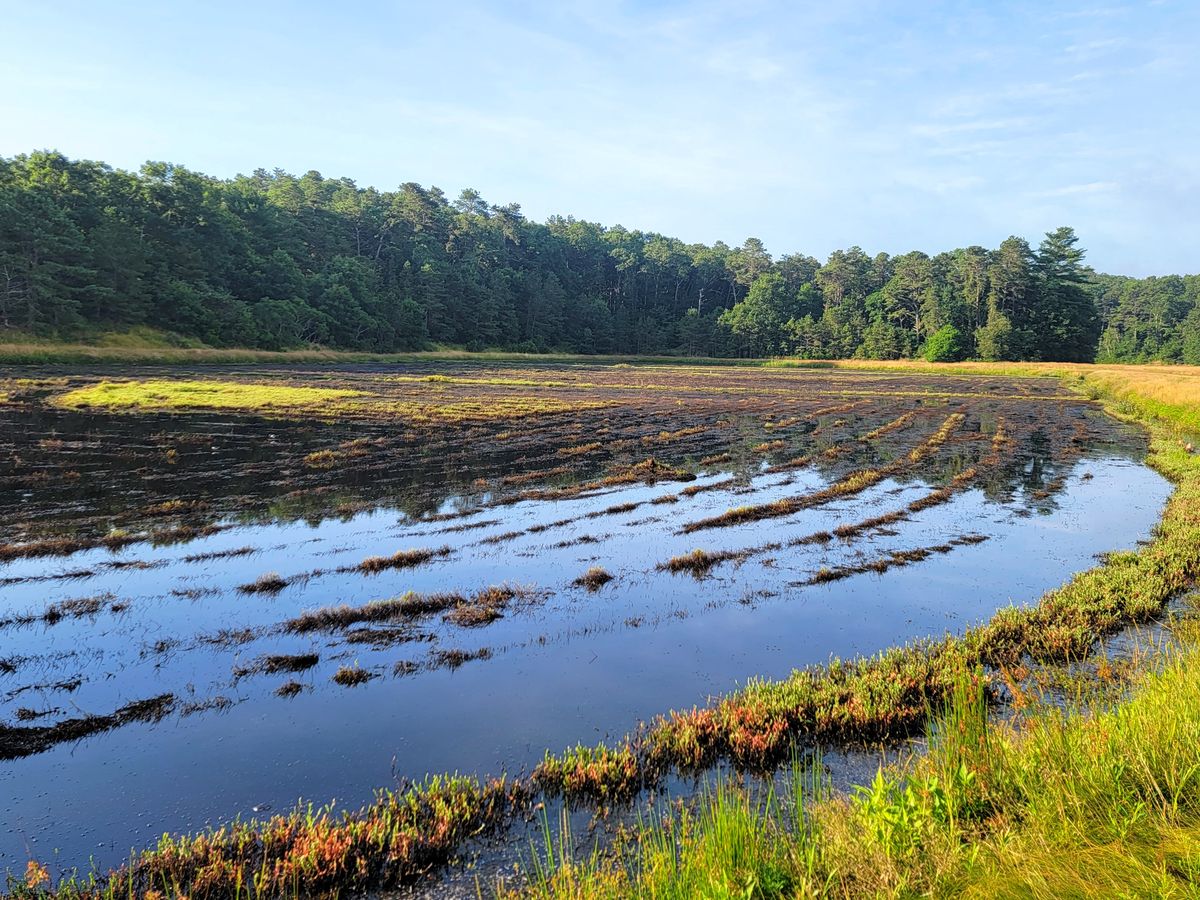Bird Monitoring at Select Cranberry Bog Restoration Sites in Southeastern Massachusetts
Significant Shorebirds at Pinnacle Bogs
On Sunday, I visited the Pinnacle Bogs in Plymouth (https://ebird.org/checklist/S115660071). I had noticed that shorebird migration had picked up significantly on the coast, and I was curious if I would find any shorebirds during my bog surveys. I was not disappointed. Thirty-four individuals of six species of shorebirds were using one of the basins at Pinnacle. Of particular note were seventeen Solitary Sandpipers, a Plymouth County high count for southern migration. These moderately sized shorebirds breed around ponds and marshes in the northern boreal forest, often using old songbird nests. In fact, they are the only North American shorebird to nest in trees. Solitary Sandpipers migrate south to Central and South America, passing through Massachusetts during spring and fall migrations, mainly using interior wet areas rather than beaches or ocean-side flats.
The name Solitary Sandpiper (Tringa solitaria) given to this species by Alexander Wilson in 1813 reflects its tendency to migrate only singly or in very small numbers. It is very unusual to find this many in one spot. In fact, until yesterday my personal high count for this species was five, so watching seventeen at once was a little bit magical. In addition to Solitary Sandpipers, I recorded Least Sandpiper, Killdeer, Spotted Sandpiper, Lesser Yellowlegs, and Pectoral Sandpiper, another relatively unusual shorebird. The number of shorebirds in this one small spot (the basin they were using was less than 3 acres in area) indicates very good habitat and food availability. As a whole, the shorebird family is one of the most threatened groups in North America, and we are looking forward to monitoring these bog sites regularly to document shorebird use and how it relates to water levels and other factors.
One of 17 Solitary Sandpipers in the eastern basin at Pinnacle Bogs
Within this basin were six species of shorebird fueling up for migration
Many other bird species were around, including this Wood Duck family
American River Otter scat was next to a well-used slide into the bog
July 26, 2022




